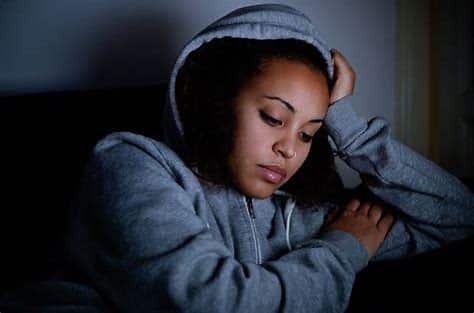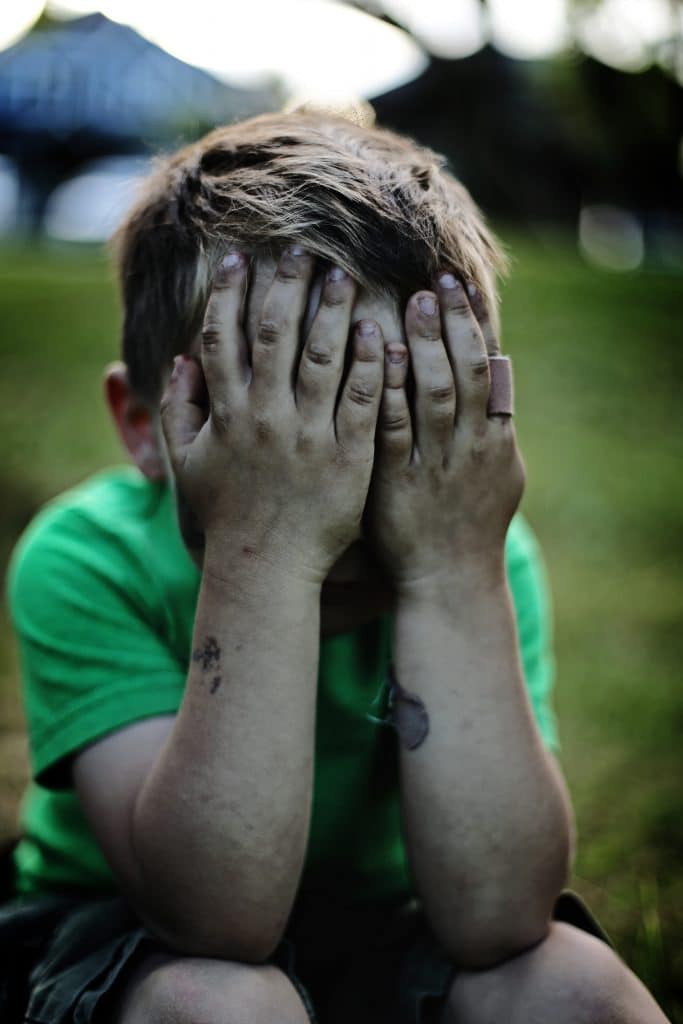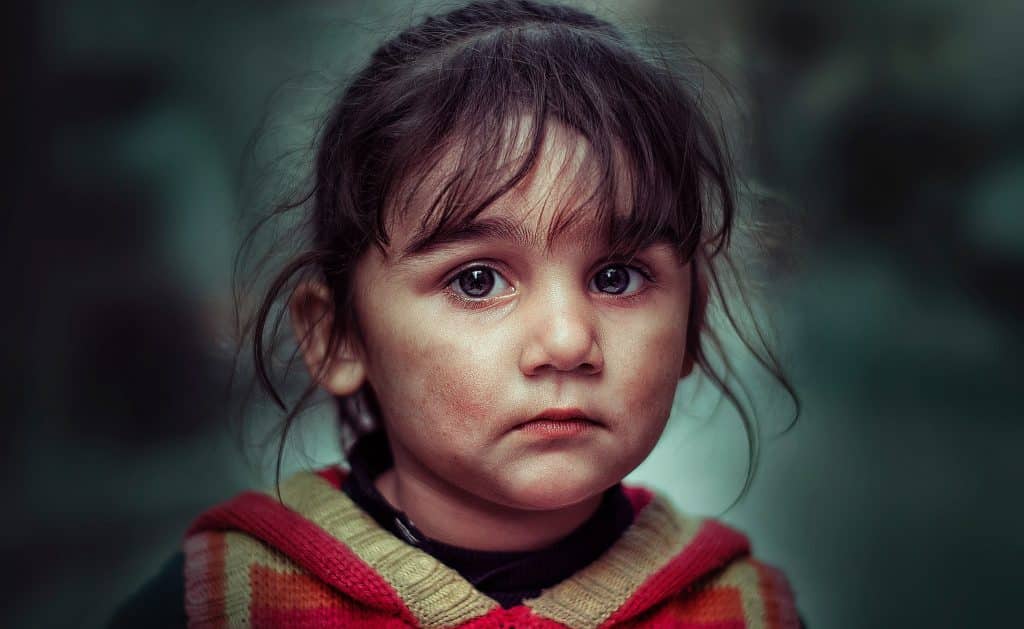Anxiety and depression in children is a growing concern in the United States. The American Psychiatric Association recommends screening for anxiety in children and adolescents, as it can be difficult to identify without proper assessment. Early detection of anxiety and depression can help ensure that the risk factors are identified and the children receive the necessary treatment to manage their symptoms.
A lot of kids have apprehensions and worries, and may sense forlorn and dejected occasionally. Potent dreads may come up at different points during growth, such as toddlers being extremely anguished about being apart from their parents even when they are safe and looked after. It is important to discern when these emotions become more than ordinary childhood sentimentality, as constant or extreme forms of fright and unhappiness might be caused by unease or despair. Moms and dads should be conscious of the signs of tension or depression in their juvenile, like fluctuations in deportment, grappling to sleep, petulance, lack of verve or incentive, difficulty focusing, or physical woes without an overt explanation. In case any of these manifestations are observable, it is significant to look for professional help so that the child can get proper therapy.

What is Generalized Anxiety Disorder in Kids?
Generalized anxiety disorder (GAD) is a mental health condition characterized by persistent and excessive worry about everyday life events. It is most common in school-aged children, adolescents, and young adults. People with GAD often experience uncontrollable or excessive worries related to everyday activities and routines, unrealistic worries not focused on a specific object or situation, and worries about the future. They may also have difficulty minimizing their worry even when presented with evidence that there is no cause for concern.
The symptoms of GAD can be debilitating and interfere with daily functioning. Common signs include restlessness, difficulty concentrating, irritability, muscle tension, fatigue, sleep disturbances, and difficulty controlling the worry. If left untreated, GAD can lead to depression or other mental health issues such as panic attacks or phobias. Treatment for GAD typically includes cognitive behavioral therapy (CBT), medication management, relaxation techniques such as mindfulness meditation or yoga, lifestyle changes such as exercise and healthy eating habits, and support from family members or friends. With proper treatment and support from loved ones, people with GAD can learn to manage their symptoms and live a more fulfilling life.
Source: healthline.com

Specific Phobias
Simple phobias are triggered by very specific things, such as thunderstorms, spiders, being left alone, or going in a swimming pool. When faced with these triggers, children may become anxious and worried and may even cry or cling to their parents for comfort. Fortunately, most kids outgrow this type of anxiety disorder as they get older and learn to cope with their fears.
Treatment for specific phobias usually involves cognitive-behavioral therapy (CBT). This type of therapy helps children identify the source of their fear and then teaches them how to manage it through relaxation techniques and gradual exposure to the feared object or situation. Parents can also help by providing support and reassurance when their child is facing a fear-inducing situation. With the right support and treatment, children can overcome their specific phobias and lead healthy lives free from anxiety.
Source: (verywellmind.com)

Depression
Depression is a serious mental health issue that can affect children of all ages. It is characterized by persistent feelings of sadness, hopelessness, and irritability. Children with depressive disorder may not want to do or enjoy doing things they used to find fun, such as playing with friends or engaging in hobbies. They may also feel helpless in situations they are able to change, such as school or home life. They can also feel lost and depressed when confronted with traumatic events. Posttraumatic stress disorder isn’t only for victims of abuse of veterans who have seen battle.
It is important for parents and caregivers to recognize the signs of depression in their children so that they can get the help they need and improve the quality of life for them. If your child seems persistently sad or uninterested in activities they used to enjoy, it is important to talk to them about how they are feeling and seek professional help if necessary. With proper treatment, children can learn healthy coping skills and manage their symptoms of depression so that they can live happy and fulfilling lives.
Source: (cdc.gov)
Common Childhood Worries
Children of all ages experience worries and anxieties from time to time. Common childhood worries can range from fear of the dark, monsters, insects, and animals in preschoolers to fear of heights or storms in younger school-age children. New events or places, challenging or difficult tasks, and even unfamiliar people can lead to fear and anxiety in children. Stranger anxiety is a common worry for kids beginning at 7 to 9 months of age and usually resolves around age 3.
It is important for parents to be aware of their child’s fears and anxieties so that they can help them cope with them in healthy ways. Parents should talk openly with their children about their worries and provide reassurance that they are safe. It is also important for parents to model positive coping strategies such as deep breathing or talking through the situation with someone else. By helping children understand their feelings and providing support, parents can help kids learn how to manage their worries more effectively.
Source: (verywellmind.com)
Types of Anxiety Disorders in Children
Childhood anxiety is a common issue that can have a significant impact on a child’s life. It can manifest in different ways, ranging from mild to severe and it usually shows itself in stressful events. Some of the most common types of childhood anxiety include separation anxiety, obsessive-compulsive disorder (OCD), and panic attacks.
Social anxiety
This social phobia is being very afraid of school and other places where there are people while general anxiety involves being very worried about the future and bad things happening. It is important for parents to recognize signs of social phobia or anxiety in their children so that they can seek help if necessary. Treatment for these disorders typically includes cognitive-behavioral therapy (CBT) which helps individuals learn how to manage their thoughts and feelings related to their anxieties.
Separation anxiety
Separation anxiety is when a child experiences extreme anxiety or panic when they are separated from their parents or caregivers. It is one of the most common forms of childhood anxiety. Symptoms may include fear of being alone, difficulty sleeping away from home, increased heart rate and excessive worry about the safety of loved ones.
 OCD
OCD
OCD is another type of childhood anxiety that involves intrusive thoughts and repetitive behaviors such as counting or checking things multiple times. Panic attacks are sudden episodes of intense fear or terror that can cause physical symptoms like chest pain, sweating, shaking, and difficulty breathing. These types of anxiety can be difficult to detect in children since they often don’t understand what they are feeling or how to express it. It’s important for parents to be aware of the signs and symptoms so they can help their children manage their anxieties in healthy ways.
Source: (verywellmind.com)
Panic Attacks
Panic is a type of anxiety disorder that can affect people of all ages, but is most commonly seen in adolescents and young adults. Symptoms of panic can include extreme discomfort or fear in certain places or situations, racing heart, and shortness of breath. Although panic attack symptoms are shared by both children and adults, the way they express their fear and worry can be very different. For example, a child may become clingy or cry while an adult may become more withdrawn or irritable.
Treatment for panic usually involves cognitive-behavioral therapy (CBT) which helps individuals to identify and change negative thought patterns that lead to anxiety. Medication may also be prescribed to help reduce the intensity of symptoms. It is important to seek professional help if you are experiencing any signs of panic as it can have a significant impact on your daily life if left untreated. With the right treatment plan, individuals can learn how to manage their symptoms and live a healthy life free from fear and worry.

Source: healthline.com
While most children have occasional bouts of worry, disorders among children can be difficult to detect. Although most childhood excessive fears fade away by age three, there are some physical symptoms that are warning signs to look out for. These can range from selective mutism, separation anxiety to obsessive-compulsive disorder, anxiety attacks and panic attacks. Children of all ages can suffer from panic disorders and anxiety symptoms – bouts of anxiety, but some are more likely to require treatment. Listed below are some of the warning signs of anxiety in children and the actual symptoms of anxiety you should watch out for.
How Can I Help My Child?
As a parent, it can be hard to discover how to assist your kid when they are dealing with an anxiety disorder. The initial move is to locate an experienced counselor who specializes in managing anxiety issues. This will guarantee that your child gets the most correct care and treatment for their state. It is also essential to converse routinely with the therapist and inquire as to how you can best guide your tyke.
Once you have established a good relationship with the therapist, you can begin helping your child face their fears. Ask the therapist for advice on how you can help your child practice coping strategies at home. Encourage them to take small steps towards overcoming their anxieties and reward them for their efforts. Praise them for any progress they make, no matter how small it may seem. With patience and understanding, you can help your child manage their anxiety disorder and lead a more fulfilling life.

If you suspect your child is suffering from mood disorders or any anxious symptoms or depressive symptoms, visit a CAMHS clinic. They will likely refer you to a child and adolescent psychologist or a trained youth counsellor. If you suspect your child is experiencing elevated anxiety symptoms or if there is a prevalence of depression, cognitive-behavior therapy is a valuable option. This type of therapy aims to change the child’s way of thinking. It has proven effective in clinical studies for children with mild or moderate child anxiety scores and is often offered to youngsters suffering from adolescent depression struggling with similar issues.
Child-reported anxiety disorders can be treated successfully if caught early. Early diagnosis is critical to preventing future problems… such as psychiatric disorders, which are more serious. Untreated child anxiety symptoms can prevent a child from achieving their social and academic potential. It can affect school attendance, friendships, and self-esteem. The rates of depression and the number of kids currently suffering from major depression prove that. It is important to seek treatment for child anxiety if symptoms persist for a long time. It is also important to provide comfort to your child and model behavior that does not reinforce anxiety.
Source: kidshealth.org
 Signs and symptoms of anxiety in children
Signs and symptoms of anxiety in children
Anxiety in minors may show itself in multiple methods, and it is critical to be mindful of the indicators and manifestations so that proper treatment can be threatened. Signs and symptoms of anxiety are a consequence of the “fight or flight” reaction, which is the body’s regular answer to jeopardy. This response activates substances in the body that affect heart rate, breathing, muscles and digestion. With anxiousness problems, this “fight or flight” reaction occurs even when there is no peril present.
Physical symptoms of children with anxiety disorders include frequent urges to go to the bathroom and chest pain. Sleeping difficulties and poor appetite are other physical symptoms or signs that your child may be suffering from either generalized anxiety disorder or social anxiety disorder. Behavioral symptoms include a rigid posture and a constant need for reassurance. Because of intense fear, these children may avoid social situations that trigger their anxiety. The most obvious characteristics of anxiety disorders in children range from a child’s lack of confidence in everyday situations, avoidance behavior to excessive crying. If your child shows any of these signs of extreme fear, lowered physical activity, attention deficit hyperactivity disorder, then you must consult a trained mental health professional for an accurate diagnosis.
There are a wide range of treatments for symptoms of anxiety in kids… In summary, there is no one best treatment. Your doctor will work with you to find the right combination of medications and other therapies that works best for your child. Anxiety can be treated effectively with medication or psychotherapy. Medication may be used alone or combined with therapy.




